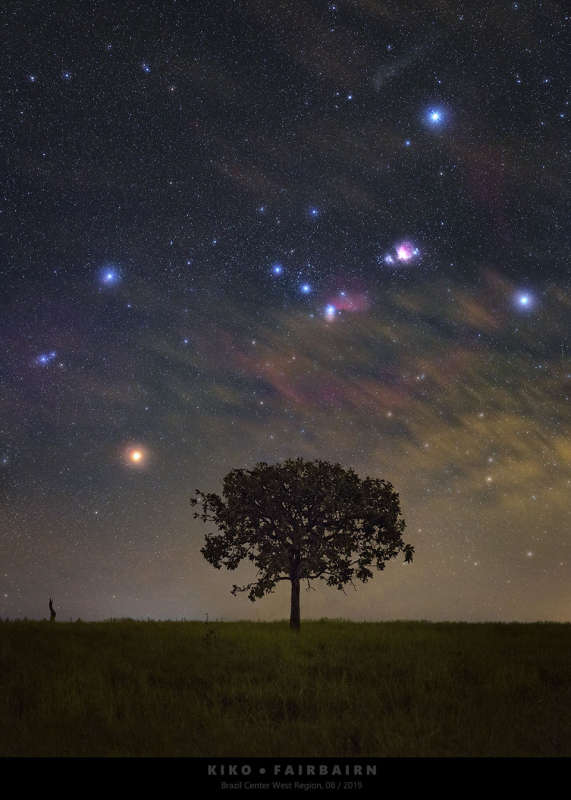Credit & Copyright: Carlos Fairbairn
Explanation:
Have you seen Orion lately?
The next few months will be the best for seeing this familiar constellation as it
rises continually earlier in the night.
However, Orion's stars and
nebulas won't look
quite as colorful to the eye as they do in this
fantastic camera image.
In the featured image,
Orion
was captured by camera showing its full colors last month
over a Brazilian copal tree from
Brazil's
Central-West Region.
Here the cool red giant
Betelgeuse
takes on a strong orange hue as the brightest star on the far left.
Otherwise, Orion's hot blue
stars are numerous, with
supergiant Rigel
balancing Betelgeuse at the upper right, Bellatrix at the
upper left, and
Saiph at the lower right.
Lined up in Orion's belt (bottom to top) are
Alnitak, Alnilam, and Mintaka
all about 1,500
light-years away,
born of the constellation's well studied
interstellar clouds.
And if a "star" toward the upper right
Orion's sword
looks reddish and fuzzy to you, it should.
It's the stellar nursery known as the
Great Nebula of Orion.
1999 2000 2001 2002 2003 2004 2005 2006 2007 2008 2009 2010 2011 2012 2013 2014 2015 2016 2017 2018 2019 2020 2021 2022 2023 2024 2025 |
Yanvar' Fevral' Mart Aprel' Mai Iyun' Iyul' Avgust Sentyabr' Oktyabr' Noyabr' Dekabr' |
NASA Web Site Statements, Warnings, and Disclaimers
NASA Official: Jay Norris. Specific rights apply.
A service of: LHEA at NASA / GSFC
& Michigan Tech. U.
|
Publikacii s klyuchevymi slovami:
Orion - Orion
Publikacii so slovami: Orion - Orion | |
Sm. takzhe:
Vse publikacii na tu zhe temu >> | |
